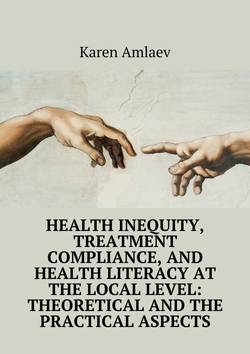Читать книгу Health inequity, treatment compliance, and health literacy at the local level: theoretical and practical aspects - Карэн Амлаев - Страница 2
ОглавлениеForeword by the leader of the WHO Healthy Cities project
Healthy Cities since its inception 25 years ago has put a strong emphasis on equity and strategies and interventions aimed to support individuals and communities have more control on decisions and developments that affect their health and wellbeing. Health literacy is increasingly recognized as a very promising domain of public health and health promotion. It is an important component in our strategies to promote empowerment and community resilience.
Translating theory and evidence into local practice can be challenging. Concepts need to be expressed and understood in professional terms that are used locally. Recommendations and frameworks for action need to be adapted to local political and organizational contexts and realities. The support of local academic institution can be vital in such efforts.
The monograph at hand prepared by Karen Amlaev, Member of the European Advisory Committee, Professor of the Stavropol State University is a good example of an endeavour to address equity and health literacy in Stavropol, linking theory and evidence with situation analyses and action plans.
I should like to congratulate professor Karen Amlaev for this initiative and his commitment to supporting the Stavropol Healthy Cities project and the work of the Russian Healthy Cities network and beyond.
Dr Agis Tsouros
Director
Division of Policy and Governance for Health and Well-being
World Health Organization’s Regional Office for Europe
Copenhagen
Introduction
The project Healthy Cities has been making its contribution to health promotion in the European Region for several decades now. The peculiar feature of it is proper response to the issues arising in public health and healthcare systems in European countries. This is reflected in the topics that are taken as key ones at certain stages of the Healthy Cities project.
The Russian Federation has been an active member of the European network of Healthy Cities and dozens of Russian cities have joined our movement in the latest years.
The monograph presented here focuses on relevant issues of modern healthcare – health inequity, low health literacy and treatment compliance.
Health inequity has become one of the key priorities for the European Strategy 2020. Even though the health status indicators, such as the death rate, are improving all over Europe there are still sharp health differences between countries, inside countries, and even between cities and social groups. Unfortunately, health inequity is increasing the global economic recession being among the key causes here. The growing unemployment and cut budgets on public needs will affect millions of people’s living conditions in Europe, and will have the greatest impact on the health status of the most vulnerable groups. Should there be no timely and proper measures taken this health inequity may only increase.
The issues of low health literacy and treatment compliance, even though seemingly belonging to a different area, yet are indirectly linked to the issue of health inequity. It is obvious that improving literacy among the population in general and especially among its most vulnerable groups (socially disadvantaged) would add to the local community resilience against the socio-economic negative effects of the crisis, as well as contribute to the reduction of health inequity.
On the other hand a higher level of health literacy will improve patients” treatment compliance, which allows gaining better results in terms of improving people’s health status with no financial cost. Our research demonstrates that the compliance among the vulnerable groups (low-income and those with a low level of education) is poorer than among other groups. This means that improved health literacy and treatment compliance would also promote reduction of health inequity.
This entire range of issues with their potential solution is reflected in this monograph. The book offers a theoretical overview of the current state of the issue as well as provides the author’s own findings and the experience of the City of Stavropol gained due to the participation in the Healthy Cities project. This monograph would make a good reading for politicians and specialists representing various professional areas (healthcare, education, etc.) whose activities have an impact on people’s health in any way.
